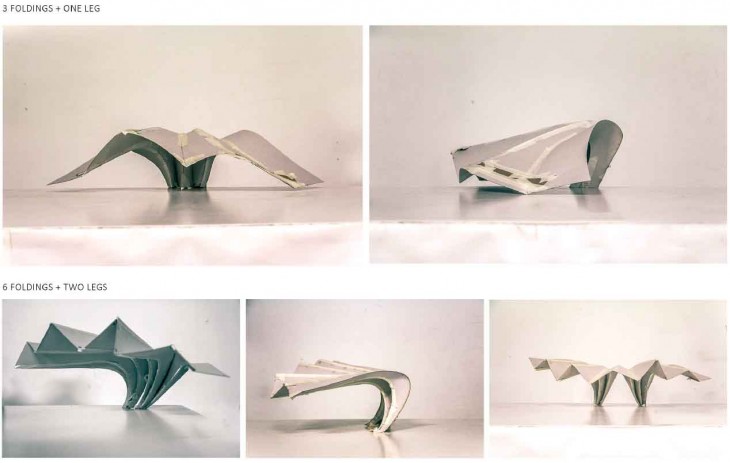SO.12 – Elective Seminar
DATA INFORMED STRUCTURES
Tutor: Manja van de Worp
The second term experimental structures course links Karamba (digital structural analysis tool) and physical experimentation to produce our own structural feedback loops through consciously evolving structural designs. Each week we will explore different ways to read and interpret the output form the analysis and how these are driven by factors as; geometry, material, connections, shell versus beam, fabrication etc. Feedback loops, on the level of geometry / component (grid) or connections, and on feedback loops based on material, and fabrication, link the results back into the design. The sequence of translating data, the choice of the drivers all influence the final structural design. We utilise these tools to relate our output data (structural analysis results) to alter our design to become stronger, stiffer, quicker to build, more uniform in carrying load, more material efficient, single connection, etc. Where as much as the structure the choice of feedback relates to the architectural design. Starting with simple tools in Karamba during the course we will extend & combine them to inform our own designed shell structures. At the end of the course we will build prototypes that showcase how the structures have been adapted based on the data extracted from the analysis in various steps, as well as their final step in becoming closely linked to fabrication and material /element choice. The feedback loops over the course, will be both digital and physical.

WORKSHOP: Structural Data Feedback Loops in Shell Structures – applied on chairs In teams design your own shell structure based on one of the topics below; a] Folding (local and global folding, curved straight) b] Between grid and shell – Transforming beams to shell. c] Intersecting shells: Freeform structures that work because two shells work together. Your structures should embed & explore the links of geometry / grid / materiality / fabrication/ connections to drive structural DATA feedback loops. We will start from a chair, and alter its geometry, based on loading and use one of the tools above to transform the structure of the chair to increase its performance and alter its aesthetics. At the end of the workshop you eed to show two evolutions of the base design, that in their own unique way interpretingthe analysis results / data. i.e. you present two different designs into which the DATA feedback loop from the original default model are different and therefor changed the aesthetics. It is this circular design process of structural feedback loops that relate to architectural expression we are interested in. For example, I could use structural feedback of folding where the is no shell action in my geometry, or I could change the geometry where there is no shell action, as both are a reaction to there being bending in the shell. (*shell action is where forces travel through the surface in compression and tension parallel to the surface, instead of like in a beam, where the forces are at the top and bottom of the surface – i.e. in bending ) Each team is to set their ideas for input / choice / sequence of data feedback.
These DATA feedback loops show specific behaviour between structural analysis results and how we can in various different ways manipulate the “design” as to improve its structural capacit
